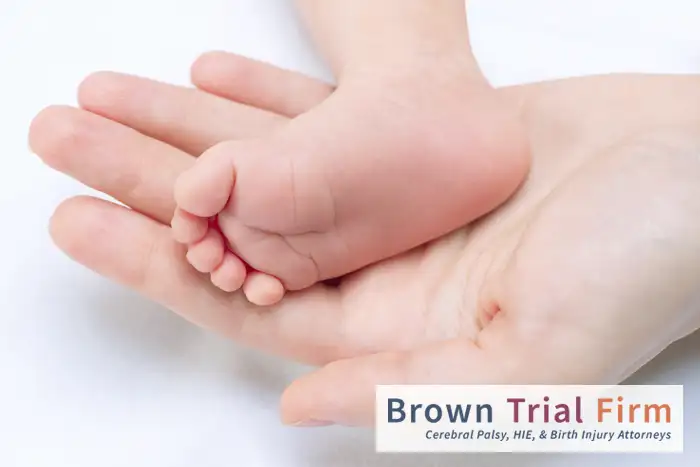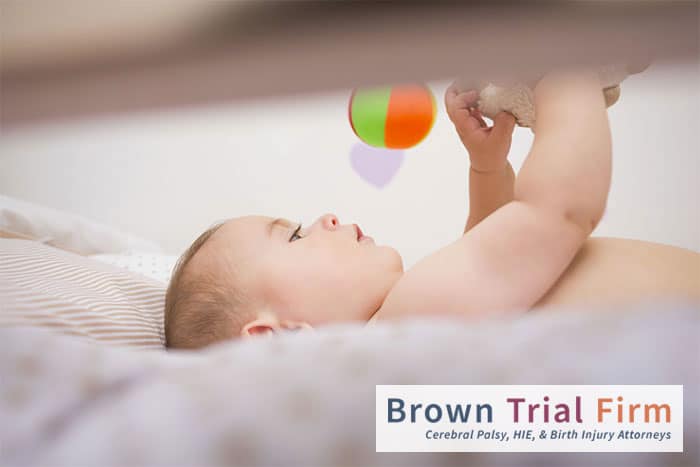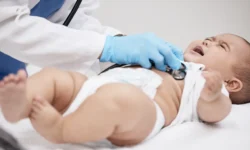In addition to its diverse landscapes, including Rocky Mountain National Park and Great Sand Dunes National Park and Preserve, Colorado also boasts an array of reputable maternity hospitals renowned for their quality labor and delivery services. Institutions such as UCHealth University of Colorado Hospital, SCL Health St. Joseph Hospital, and Rose Medical Center offer some of the best medical services in the nation for maternal and newborn care.
However, even in these esteemed establishments, the risk of birth injuries still exists. These birth injuries, which are often the result of medical errors, can have profound and lifelong impacts on both the child and their family.
In Colorado, the number of children affected by birth injuries is substantial. Families are left coping with not only emotional turmoil but also the financial burden of the potentially lifelong medical care and treatments that follow.
At Brown Trial Firm, we understand that navigating the complexities of medical malpractice law in the wake of such a traumatic event can be overwhelming, but you don’t have to go through this process alone.
Colorado birth injury attorney Laura Brown is ready to advocate for your child’s future, guiding your family through the legal maze so you can get your child the justice and compensation they need to live their lives to the fullest.
Our consultations are free.
However, not every case is the right fit.
When we do decide to accept your case, rest assured you won’t have to deal with out-of-pocket costs.
We only get paid if we win the case for you.
Colorado’s declining birth rate
Around 63,000 babies are born in Colorado each year, which translates to 52.5 births per 1,000 women. Compared to other states, this is a fairly low fertility rate. In fact, it’s the sixth-lowest in the nation.
Colorado has experienced a sharp decline in birth rates over the past 15 years. Some women are simply choosing not to get pregnant, while others are losing their children during childbirth or shortly after.
Infant mortality rates in Colorado and the U.S.
According to data from the Centers for Disease Control and Prevention (CDC), almost 300 babies in Colorado died in 2020 alone—an infant mortality rate of 4.8 deaths per 1,000 live births.
By comparison, there were 19,578 infant deaths across the whole United States in that same year.
The top 5 leading causes of infant deaths were:
- Congenital malformations (21%)
- Complications from preterm birth and low birth weight (16%)
- Sudden infant death syndrome (SIDS) (7%)
- Unintentional injuries (6%)
- Maternal complications (6%)
How often do birth injuries lead to infant fatalities?
It’s hard to know how many birth injuries occur every year and how much of an impact they have on the national infant mortality rate. The closest approximation is probably the CDC’s statistics on “unintentional injuries” during childbirth.
According to their figures, accidents are the fourth-leading cause of death among infants, accounting for 1,192 infant deaths per year.
While not all cases of infant death are preventable, deaths that result from a failure to diagnose or manage issues during pregnancy or delivery or injuries caused by a medical mistake could be the result of negligence. In such cases, parents may be able to seek compensation through an infant wrongful death lawsuit.
Common injuries from childbirth
Also called “birth traumas” or simply “injuries from childbirth,” birth injuries are any injury sustained by a baby during delivery. They can run the gamut from mild to severe to life-threatening.
Common birth injuries include:
- Cerebral palsy. This is a neurological disorder, often resulting from a brain injury, a brain bleed or a lack of oxygen during labor and delivery. It can impair coordination, muscle tone, movement, speech, and hearing, as well as cause seizures.
- Brachial plexus injuries. These injuries, which include Erb’s palsy and Klumpke’s palsy, involve damage to the bundle of nerves responsible for movement and sensation in the arm. They can result in weakness, loss of feeling, or even paralysis of the arm or hand.
- Hypoxic-ischemic encephalopathy (HIE). This is a type of brain damage that occurs when the brain doesn’t receive enough oxygen and blood. It can lead to developmental delays, epilepsy, cognitive issues and motor skill development problems.
- Intracranial hemorrhage. This is bleeding within the skull, often caused by a traumatic birth. It can lead to long-term neurological and cognitive issues.
- Fractures. These are broken bones that occur during birth, with the collarbone (clavicle) being the most commonly fractured bone during childbirth. While they usually heal well, they can cause temporary pain and limited movement.
- Caput succedaneum and cephalohematoma. These conditions involve swelling or bleeding underneath the baby’s scalp and are often caused by vacuum extraction, a large baby, or pressure during a difficult or prolonged birth. While they often resolve on their own, severe cases or improper treatment can lead to other complications.
- Bell’s palsy. This injury can occur if pressure is put on the baby’s face during birth or if forceps are used for delivery, potentially damaging the facial nerve. This can result in an inability to move the affected side of the face.
Important note: There’s a difference between birth defects and birth injuries. Unlike a birth injury, a birth defect is a health condition that your baby would have been born with regardless of the circumstances of their delivery.
For example, if your child has Down’s syndrome, that’s a chromosomal condition caused by genetics that a doctor couldn’t prevent and is not the result of negligence.
Birth injuries vs. birth defects: What’s the difference?
Learn the differences between birth injuries and defects, including common causes and treatment options.
What disabilities can you get from birth trauma?
Birth injuries, especially those caused by brain damage like cerebral palsy, can result in a range of disabilities, depending on the specific nature and severity of the injury. Some common disabilities associated with birth injuries include:
- Developmental disabilities. Birth injuries may lead to developmental disabilities, which can impact cognitive functioning, learning abilities and overall development. These disabilities may range from mild to severe and can affect intellectual, language and social skills.
- Sensory impairments. Birth injuries can result in sensory impairments, including vision or hearing loss. Visual impairments may range from partial vision loss to complete blindness, while hearing impairments can range from mild to profound deafness.
- Intellectual disabilities. Some birth injuries can lead to intellectual disabilities, affecting cognitive functioning and adaptive skills. The severity of intellectual disabilities can vary widely.
- Motor disabilities. Birth injuries may cause motor disabilities, including difficulties with muscle control, coordination and movement. This can impact a child’s ability to walk, use their limbs, or perform daily activities independently.
It is important to note that the impact and severity of disabilities can vary from case to case, and each child’s situation is unique. Early intervention, medical care, therapy and support services can play a significant role in managing and supporting individuals with disabilities resulting from birth injuries.
Conditions related to cerebral palsy
Learn about the most common health complications and disabilities related to cerebral palsy.
What is evidence of birth trauma?
Birth trauma isn’t always obvious or immediately apparent. Some conditions can take years to develop, and they can include a full range of physical, mental and developmental problems.
Here are a few red flags that may indicate a baby has a birth injury:
- Seizures
- Difficulties with motor control
- Weak or absent reflexes
- Signs of an intellectual disability
- Poor coordination
- Delayed speech
- Failure to reach appropriate milestones over time
- A general failure to thrive
If you recognize any of these injuries in your child and suspect they’re the result of medical negligence during labor and delivery, it’s time to take action.
How is birth trauma diagnosed?
There are 3 main periods to monitor babies for birth trauma: during delivery, after delivery, and after their release to the parents’ home. Birth injuries can be diagnosed during any of these periods.
Part of the doctor’s job is to remain vigilant against delivery complications and to immediately treat any signs of a medical problem in the mother or baby. This duty is shared by nurses and other healthcare professionals involved in the birthing process as well.
If you suspect that a birth injury has hurt your baby, your doctor can perform a variety of diagnostic tests to determine a diagnosis. These tests might include the following:
- Physical examinations to check for injuries
- Evaluations of the baby’s reflexes, motor skills and cognitive abilities
- An EEG (electroencephalogram) to test brain activity
- An MRI (magnetic resonance imaging) to look for abnormalities in the body
- PET (positron emission tomography) scans to look for evidence of brain disorders like cerebral palsy
Signs of developmental delays in babies & signs of a birth injury
Learn to identify the early signs of a birth injury to ensure the health and safety of your baby.
What is medical negligence for birth injury?
Medical negligence occurs when a healthcare professional fails to fulfill their “duty of care” towards a patient. In the legal context of medical malpractice, it’s also necessary to prove that their dereliction of duty resulted in an injury and that the injury resulted in damages.
There are numerous ways that a doctor or nurse can be negligent during childbirth. Here are just a few scenarios:
- Improperly using equipment such as forceps or vacuum extractors
- Not providing timely assistance before or during labor
- Failing to anticipate common birth problems, such as a compressed umbilical cord
- Failing to treat the mother’s medical conditions (e.g., gestational diabetes) during pregnancy, resulting in injuries to the baby
- Not monitoring for signs of fetal distress during delivery
- Prescribing the wrong medications or dosages
- Recommending or not recommending a cesarean section (C-section), depending on the circumstances of the birth
- Miscalculating the size of the fetus
- Failing to monitor the baby’s heartbeat or oxygen levels during delivery
- Mismanaging fetal position and using excessive force during delivery, including twisting and pulling the baby
- Minimizing or improperly explaining risks to the mother, influencing her informed consent about procedures
- Failing to detect or treat infections
- Sending nurses or other support staff out of the room when they’re needed
- Misreading lab results
- Not treating fetal health conditions in the womb
- Failing to recognize certain health conditions (e.g., cerebral palsy) as signs of potential birth injury
- Prematurely discharging mother and baby
- Providing poor follow-up care for mother and baby after delivery or release
These are just a few examples of how medical negligence during delivery can lead to serious injuries. If you suspect your child’s birth injury was caused by medical negligence, it’s crucial to discuss your situation with a birth injury attorney.
What is the statute of limitations for birth injury in Colorado?
In Colorado, the statute of limitations for medical malpractice is 2 years for adults but 8 years for children. In other words, you have until your child’s eighth birthday to file a birth injury lawsuit.
Attorney Laura Brown, specializing in cases of medical negligence during labor and delivery, with a proven track record of securing lifetime care for injured children, is the advocate you can trust for a successful outcome.
Contact an experienced Colorado birth injury attorney
Experiencing a birth injury can be a heartbreaking ordeal, but you don’t have to face it alone. Experienced Colorado birth injury attorney Laura Brown can be your advocate and fight for the justice and compensation your child deserves.
From investigating potential medical negligence to filing and pursuing a lawsuit, Laura will stand by your side every step of the way.
She understands the complexities of birth injury cases and is dedicated to helping you navigate the legal system with confidence and ease.
$10.3
Million
Compensation for the lifelong medical expenses of a child who suffered severe injuries from suffocation on his mother’s umbilical cord, leading to brain damage and cerebral palsy.
Don’t let the burden of medical bills and the uncertainty of your child’s future weigh you down during this stressful time. At Brown Trial Firm, we’ll handle all the legal aspects of your case so you can focus on what truly matters: your child’s well-being and your family’s healing.
Contact our office today for a free consultation.
References
Colorado. (2020, May 19). www.cdc.gov. https://www.cdc.gov/nchs/pressroom/states/colorado/co.htm
Colorado’s fertility rate plummeting, now one of US lowest. (2022, December 9). FOX31 Denver. https://kdvr.com/news/data/colorados-fertility-rate-one-of-us-lowest/
Ely, D., & Driscoll, A. (2022). Infant Mortality in the United States, 2020: Data From the Period Linked Birth/Infant Death File. National Vital Statistics Reports, 71(5). https://www.cdc.gov/nchs/data/nvsr/nvsr71/nvsr71-05.pdf
Fertility Rate by State. (2020, April 27). www.cdc.gov. https://www.cdc.gov/nchs/pressroom/sosmap/fertility_rate/fertility_rates.htm





